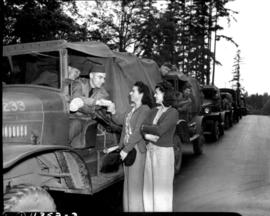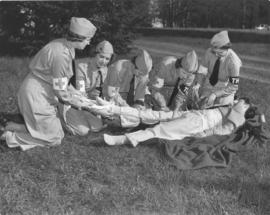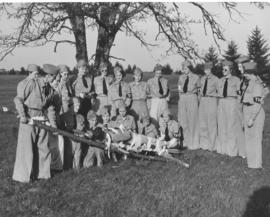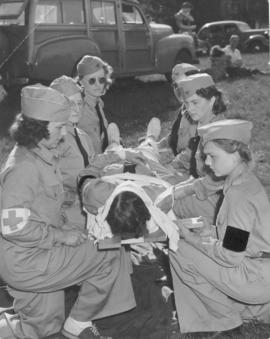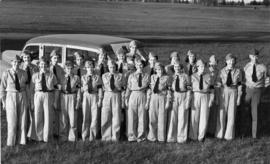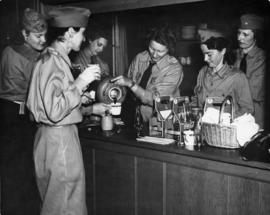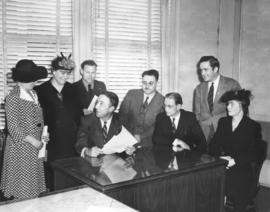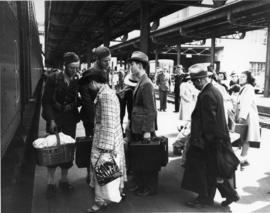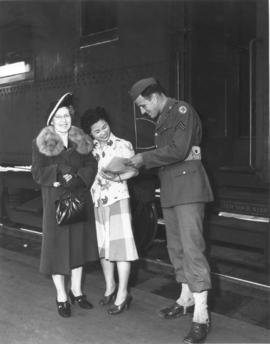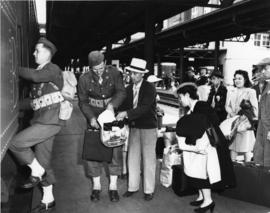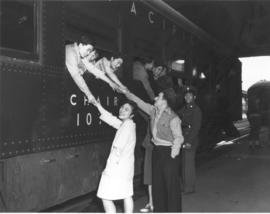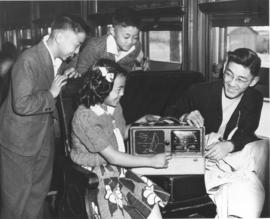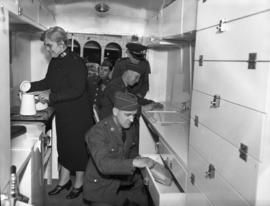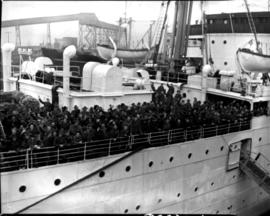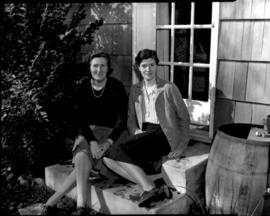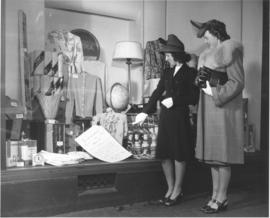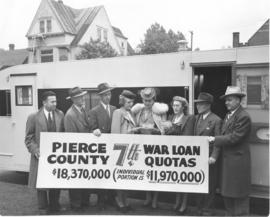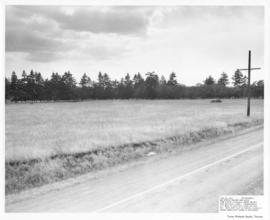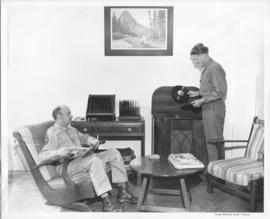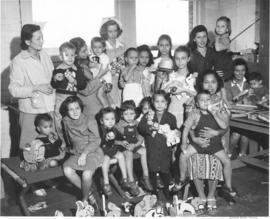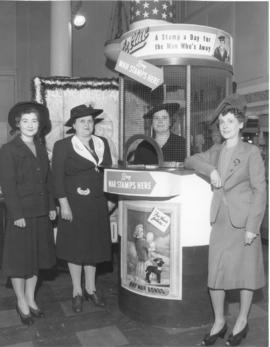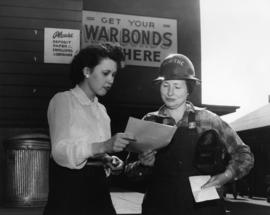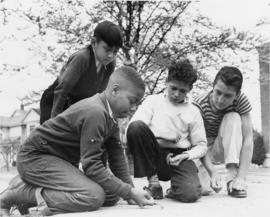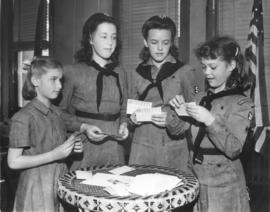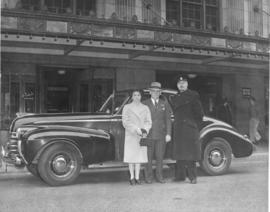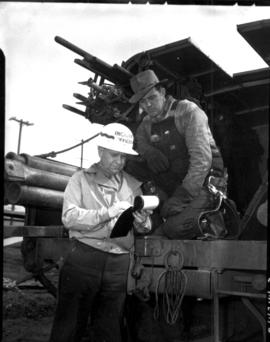- Item
- 1941-05-19
Part of Richards Studio Photographs
Unidentified soldiers says goodbye to two female friends as they prepare to take part in a military convoy. In mid May of 1941, 36,000 Fort Lewis troops set out for California to participate in war games. The logistics were the equivalent of moving a small city. 23,000 men and officers travelled in 4,000 motor vehicles of all sizes, from big 6 wheelers to jeeps. There would be two separate caravans on 2 routes, US Hwy 97 and US 99. Departures would begin May 19 and continue through the 23. The remaining troops would travel on 25 trains. The war games would be held on the Hunter Liggett Reservation, about halfway between San Francisco and Los Angeles, near Fort Ord. (T. Times 5/14/1941, pg. 1)
World War, 1939-1945--Military mobilizations; Troop movements--1940-1950;
